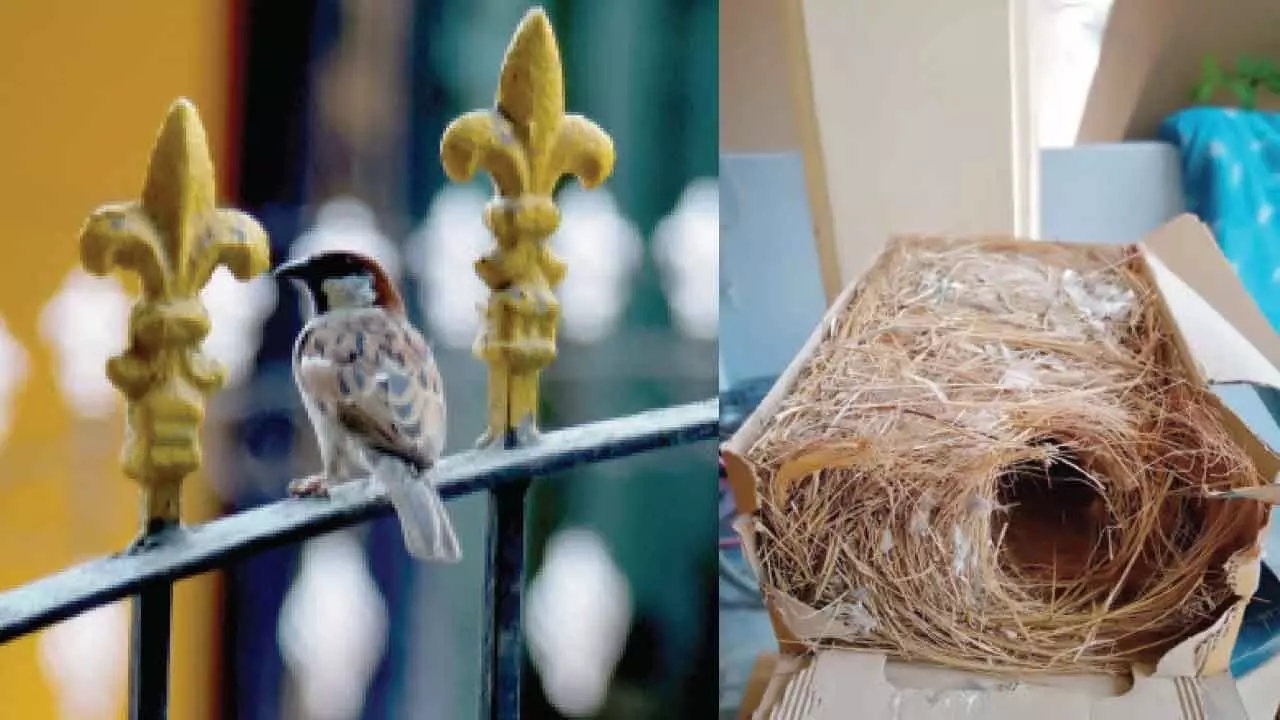Oh! Nest boxes bob up to save shrinking sparrow population

Hyderabad: The days have disappeared when people used to wake with the chirping sound of the house sparrow, as rapid urbanisation has led to a drastic decline in their numbers. As part of World Sparrow Day on Thursday, avian enthusiasts and several residential associations emphasised the need for a sparrow conservation programme. Under the “Bring Back Sparrows” initiative, they are working to reconnect with avian life by building nest boxes.
Known by various names such as “Goraiya” in Hindi, “Kuruvi” in Tamil and “Chirya” in Urdu, sparrows have been a part of daily life for generations. However, due to various factors such as the lack of green spaces, the use of toxic compounds, and other environmental changes, sparrows have been disappearing at an alarming rate. On the positive side, with multiple reports highlighting their decline, conservation efforts have gained momentum in many residential areas. While their numbers remain low, the sight of these small birds is still an encouraging sign.
Stressing on nest boxes, Pradeep, founder of Animal Warriors Conservation Society (AWCS), said, “The rapid increase in multi-story building construction has disrupted bird habitats, making it difficult for them to find suitable homes in big cities. In recent years, there has been a drastic rise in the urban pigeon population.
However, through our initiative, ‘Bring Back Sparrows,’ we have successfully brought back 20,000 sparrows to the city over the past nine years. This has been possible by installing nest boxes in residential areas, as bird-friendly nesting spaces in homes and balconies provide them with safe breeding grounds. Additionally, educating children and communities about the ecological importance of sparrows can help ensure long-term conservation efforts.”

















